SteelSeries’ Arctis headsets are already widely popular among gamers for their comfort, ease of use, and sound. With the release of the Arctis Pro line of gaming headsets, I’d posit they’re about to get a lot more popular — including with a subset of typically hard-to-please audiophiles.
Coming in two variants — a wired Pro+ GameDAC version and a Wireless Pro Bluetooth version — this new Arctis echelon focuses on high-quality, high-fidelity sounds for the PS4 and PC. The line sports an improved design, sturdy construction, and a few bells and whistles you don’t typically find on most gaming headsets these days.
There’s a lot to love here, and I’d wager these are the best headsets SteelSeries has ever released. Combining some of the technology found in the Siberia line of headsets, these new cans allow for nuanced customization for almost any setup.
The only “big” downsides are that they’re fairly expensive when compared to many gaming headsets on the market, and they’re both a bit cumbersome to set up out of the box. They’re high-end for sure — and going toe to toe with the likes of Sennheiser, ASUS, and Astro, they ought to be. If you’ve got the budget for these bad boys, you won’t be disappointed.
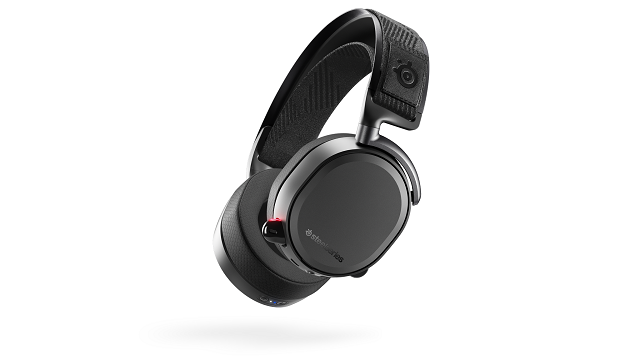
Design
Whereas other headsets in the Arctis line have felt a bit flimsy in the past, the Arctis Pro tier feels anything but. Made with premium materials, the Arctis Pro+ and the Arctis Pro Wireless are made of sturdy aluminum alloy and steel across the headband and hangers, with bits of resilient plastic gracing the outside of each removable, customizable earcup. Sporting a gunmetal gray finish, the headset itself has a more elegant appearance than those headsets in the original line.
Both sets of cans feature the same comfortable ski-goggle headband found in other Arctis models, while the earcups seem bigger and more agreeable than those on the Arctis 5 and Arctis 7. Moving to the left earcup, you’ll find a retractable mic on the front of each set, as well as inputs and controls on the back.
Something I find more pleasing on these headsets than the others in the Arctis line is that the mic mute buttons and volume scroll wheels are more prominent and textured this time around. This makes them easier to find and use in-game or during streams; finding them before was a pain, so I’m glad to see this improved in these prestige models.
And as for the Wireless model specifically, SteelSeries has made the Bluetooth button more identifiable in this model (in comparison to the Arctis 3 Bluetooth model). On the outside, it’s not a huge, headset-selling improvement, but from a usability standpoint, such an improvement is appreciated.

Sound Quality and Features
Before we get into the feature sets of these products, I want to get something off my chest: Both of these headsets sound fantastic. Out of all of the SteelSeries cans I’ve been able to test over the past year and a half, these stand head and shoulders above the rest.
Whereas previous iterations of the Arctis line often left me wanting more in regards to sound — specifically surround sound — I found that the Pro line finally provided the high-end sound quality I’ve been searching for in a SteelSeries headset.
It’s especially worthy of note that while the PC Master Race has mostly come to expect this type of quality from a gaming headset, most PlayStation 4 players will find a distinct improvement in sound quality from their typical console headset — and they’ll be able to enjoy the headset/home theater combo much more easily than they might have before.
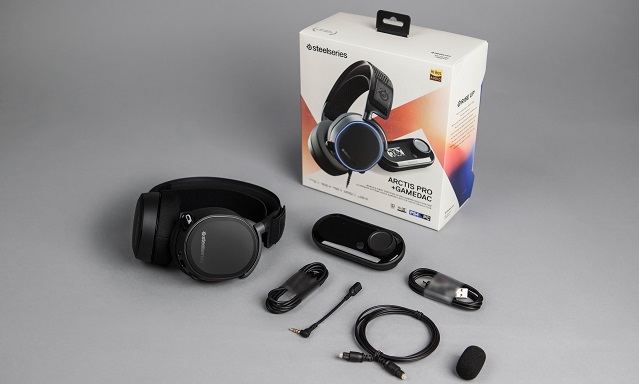
Arctis Pro+ GameDAC
I was able to hear directional sound for the first time on console with the Pro+ GameDAC (and with the Pro Wireless). There are several other headsets on the market that can do this, sure, but the Arctis Pro line does it more elegantly with single drivers. Playing games like Horizon: Zero Dawn and Overwatch, I was able to pinpoint where enemies were coming from — and bring them down with greater ease. It’s something I loved in Logitech’s G533, but something I never thought I’d get on console until now.
SteelSeries says the Arctis Pro+ GameDAC achieves higher-quality sound than the Pro Wireless by using what’s called a dedicated USB DAC (digital audio converter), along with an amplifier made specifically for gaming. It even received the Japanese Audio Society’s Hi-Res Award — if that kind of thing floats your boat. But honestly, the difference between the two headsets was negligible in our testing of the devices.
If you go the Pro+ route, the DAC itself comes packaged with the headset and fits in the palm of your hand. It’s made of black plastic and has firm rubber feet on the bottom. The top is home to an OLED screen that displays the audio mode you’re currently in, your surround sound and EQ settings, your volume, and your audio/chat mix. On the back, you’ll find I/Os for optical, USB, Line Out, and mobile. On the left side, you’ll find the input for the headset itself.
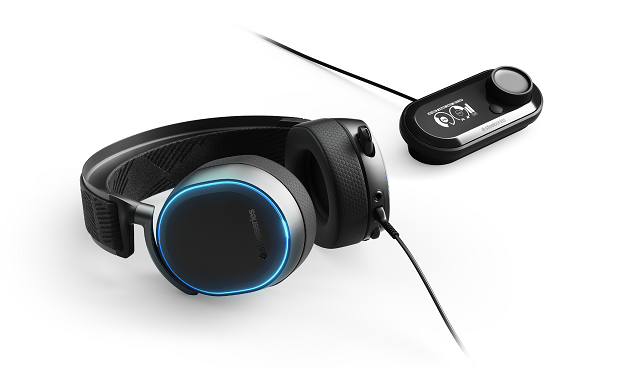
SteelSeries specifically states that the GameDAC model is best used when playing at a desk, an assessment I tend to agree with. One of my biggest issues with the headset’s setup (even if it is a nitpicky one) is that there are a lot of cables here — especially if you’re wanting to use the headset’s optical passthrough.
With that in mind, there are at least three cables attached to the DAC if that’s the route you want to go: one coming from the headset into the DAC, one coming from the DAC to your PS4’s USB port, and one coming from the DAC to your console’s optical port. If you’re using the headset on PC, you can opt out of the optical option and only have two cables, making things a bit more manageable.
So for a living room setup, I can see things becoming a bit tedious and cumbersome.
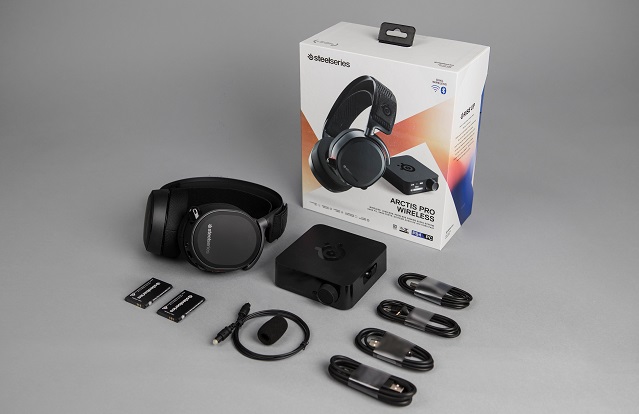
Arctis Pro Wireless
The Pro Wireless model provides similarly crisp and robust sound as the Pro+ GameDAC, but this time over lossless 2.4GHz wireless or Bluetooth connections. Here, surround sound is meaty, with nice highs and mids across games and music. Like the Pro+, the Pro Wireless isn’t huge in the volume department, meaning we had to dial up the volume on each headset and corresponding input device to achieve comfortable sound, but the 7.1 surround of the Pro Wireless performed well and provided clear dialog and in-game sound.
We found this to be true on both PS4 and PC. Playing Skyrim, for example, we were able to hear in-game breathing better than we had with other headsets, adding a sense of realism to our Elder Scrolls escapades. Outside of gaming, tracks by Anthrax sounded fantastic in high bit rate.
As for setup, the Pro Wireless features a wireless USB transmitter a la SteelSeries’ Siberia 800 and 840 models — but sans the extra power supply. This is where you’ll adjust your audio, EQ, and chat mix settings, as well as find I/Os for optical, mobile, and external speaker systems. Like the GameDAC, the USB transmitter is mostly user-friendly when it comes to getting your settings just right, and it’s nice controlling all of your settings via hardware instead of relying on software to do the trick.
The transmitter does suffer from the same tedious setup as the GameDAC, however, especially if you’re trying to use (once again) the transmitter’s optical passthrough. You’ll have quite a few cables to contend with in any setup, and (pro tip) you’ll need to set the transmitter to its PS4 setting if you want to use that functionality on PC — something that’s not terribly clear out of the gate.
But if you’ve got a home theater setup, want to listen to podcasts in long load queues, or take calls while gaming, you’ll find that the Pro Wireless makes multitasking essentially effortless once you’ve got everything dialed in. Pair that with a decent 20-hour battery life and the ability to charge batteries inside the wireless transmitter, and the Pro Wireless becomes more ubiquitous than it initially appears.

Verdict
In my eyes, the choice between the Pro+ GameDAC and the Pro Wireless comes down to usability. Both are Hi-Res certified, both provide awesome, clear sound, and both provide line-out capabilities for mobile and/or home theater setup (which is a huge boon depending on your setup and use case). On top of that, both headsets are comfortable, well-constructed models that can be used on the go if you like listening to music on the commute to work, for example.
The Pro+ GameDAC features RGB lighting, while the Wireless Pro does not, which could potentially be a selling point for some users. But overall, the choice comes down to whether you want a wireless or wired setup — and whether that’s worth the $70 difference between the two sets.
Ultimately, though, SteelSeries’ new Pro line is a huge step up in audio quality over the original Arctis line of headsets. I’d (really) like to see the headsets come in at a slightly lower price point, but if you’ve got the pockets for them, you can’t go wrong with either.
You can buy the Arctis Pro+ GameDAC on Amazon for $249.99 and the Pro Wireless for $329.99.
[Note: SteelSeries provided the Arctis Pro+ GameDAC and Arctis Pro Wireless models used in this review.]

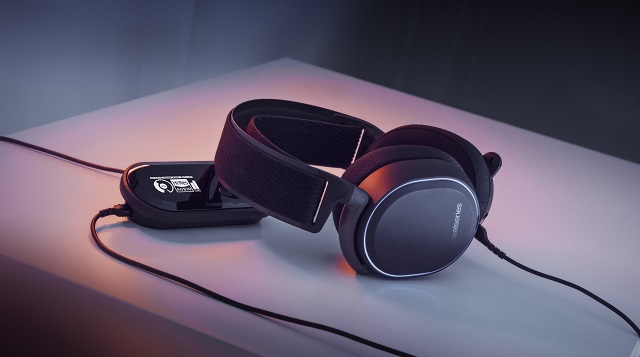





Published: Mar 13, 2018 5:20 PM UTC